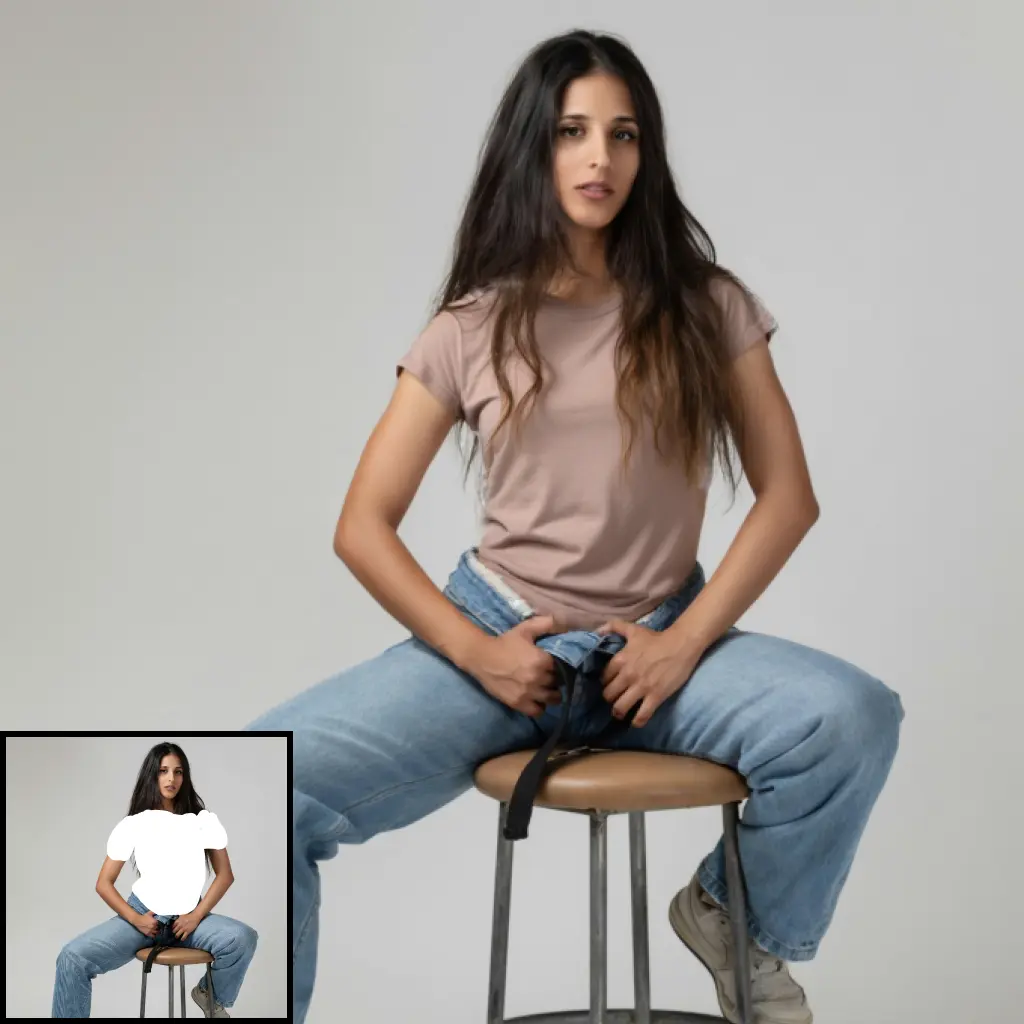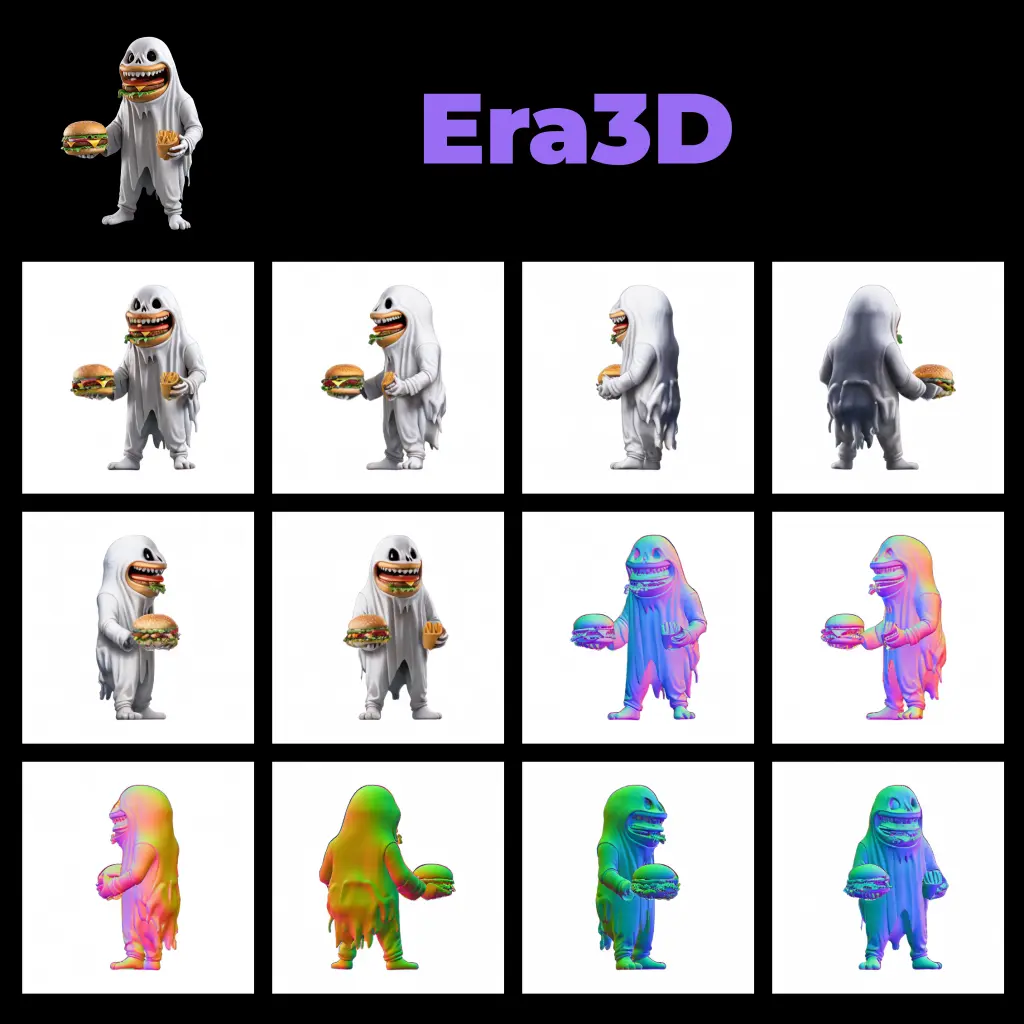ComfyUI Node: IMAGDressingNode
IMAGDressingNode
CategoryAIFSH_IMAGDressing
AIFSH (Account age: 516days) Extension
IMAGDressing-ComfyUI Latest Updated
2024-11-14 Github Stars
0.06K
How to Install IMAGDressing-ComfyUI
Install this extension via the ComfyUI Manager by searching for IMAGDressing-ComfyUI- 1. Click the Manager button in the main menu
- 2. Select Custom Nodes Manager button
- 3. Enter IMAGDressing-ComfyUI in the search bar
Visit ComfyUI Online for ready-to-use ComfyUI environment
- Free trial available
- 16GB VRAM to 80GB VRAM GPU machines
- 400+ preloaded models/nodes
- Freedom to upload custom models/nodes
- 200+ ready-to-run workflows
- 100% private workspace with up to 200GB storage
- Dedicated Support
IMAGDressingNode Description
Facilitates clothing segmentation in images for AI art and digital fashion with advanced image processing techniques.
IMAGDressingNode:
The IMAGDressingNode is designed to facilitate the process of human parsing and clothing segmentation within images, specifically tailored for AI art and digital fashion applications. This node leverages advanced image processing techniques to identify and segment different clothing items, such as upper garments and dresses, from human figures in images. By utilizing contour detection and segmentation algorithms, it provides precise delineation of clothing areas, which can be crucial for tasks like virtual try-ons, fashion design, and digital art creation. The node's primary goal is to enhance the accuracy and efficiency of clothing segmentation, allowing artists and designers to focus on creative aspects without getting bogged down by technical complexities. Its integration into the ComfyUI environment ensures a seamless workflow for users, enabling them to apply sophisticated image processing capabilities with ease.
IMAGDressingNode Input Parameters:
logits_result
The logits_result parameter represents the raw output from a neural network model, which is used to determine the segmentation of different parts of the human figure in an image. This parameter is crucial as it directly influences the accuracy of the segmentation process. The values in logits_result are processed to identify specific clothing items by determining the most likely class for each pixel. There are no specific minimum, maximum, or default values for this parameter, as it is dependent on the model's output.
meta
The meta parameter contains metadata about the image, including the center, scale, width, and height. This information is essential for transforming the logits into a format that aligns with the original image dimensions, ensuring that the segmentation results are accurate and properly scaled. The meta parameter does not have fixed values but is derived from the image's properties.
IMAGDressingNode Output Parameters:
parsing_result
The parsing_result is the primary output of the node, providing a segmented map of the image where each pixel is assigned a class label corresponding to different parts of the human figure, such as clothing items. This output is crucial for applications that require precise identification and manipulation of clothing areas within an image. The parsing_result is typically a 2D array where each value represents a class label, making it easy to interpret and use in further processing or visualization tasks.
wear_type
The wear_type output indicates the type of clothing detected in the image, such as "dresses" or "upper cloth." This output is important for categorizing the clothing items and can be used to tailor subsequent processing steps or to provide context for the segmentation results. The wear_type is a string value that helps in understanding the nature of the clothing identified in the image.
IMAGDressingNode Usage Tips:
- Ensure that the input image is pre-processed correctly to match the expected input format of the neural network model, as this will significantly impact the accuracy of the segmentation results.
- Utilize the
metaparameter effectively by providing accurate image metadata, which will help in aligning the segmentation results with the original image dimensions. - Experiment with different neural network models to find the one that best suits your specific use case, as different models may offer varying levels of accuracy and performance.
IMAGDressingNode Common Errors and Solutions:
"IndexError: list index out of range"
- Explanation: This error may occur if the
logits_resultdoes not contain the expected number of classes or if the image dimensions do not match the expected input size. - Solution: Verify that the input image and metadata are correctly formatted and that the neural network model is configured to output the expected number of classes.
"ValueError: could not broadcast input array"
- Explanation: This error can happen if there is a mismatch between the dimensions of the
logits_resultand the expected output size. - Solution: Ensure that the
metaparameter accurately reflects the image's dimensions and that any transformations applied to thelogits_resultmaintain the correct shape.
IMAGDressingNode Related Nodes
RunComfy is the premier ComfyUI platform, offering ComfyUI online environment and services, along with ComfyUI workflows featuring stunning visuals. RunComfy also provides AI Playground, enabling artists to harness the latest AI tools to create incredible art.



